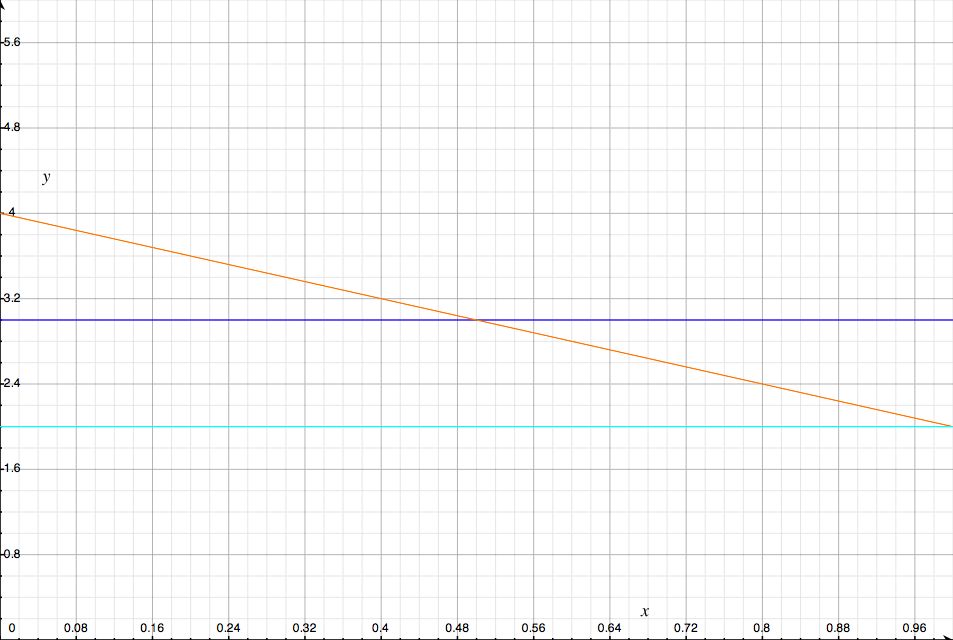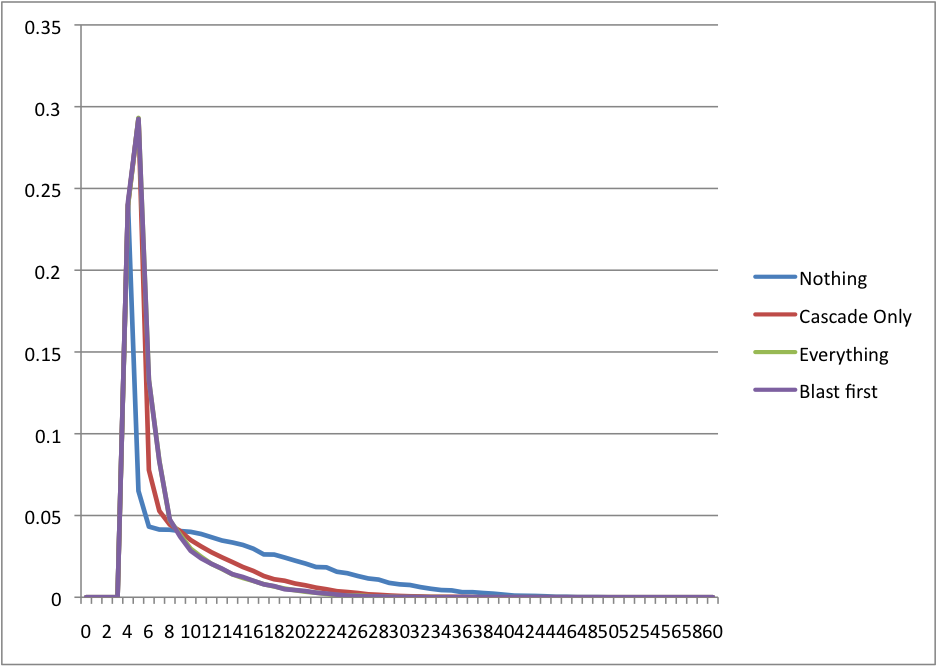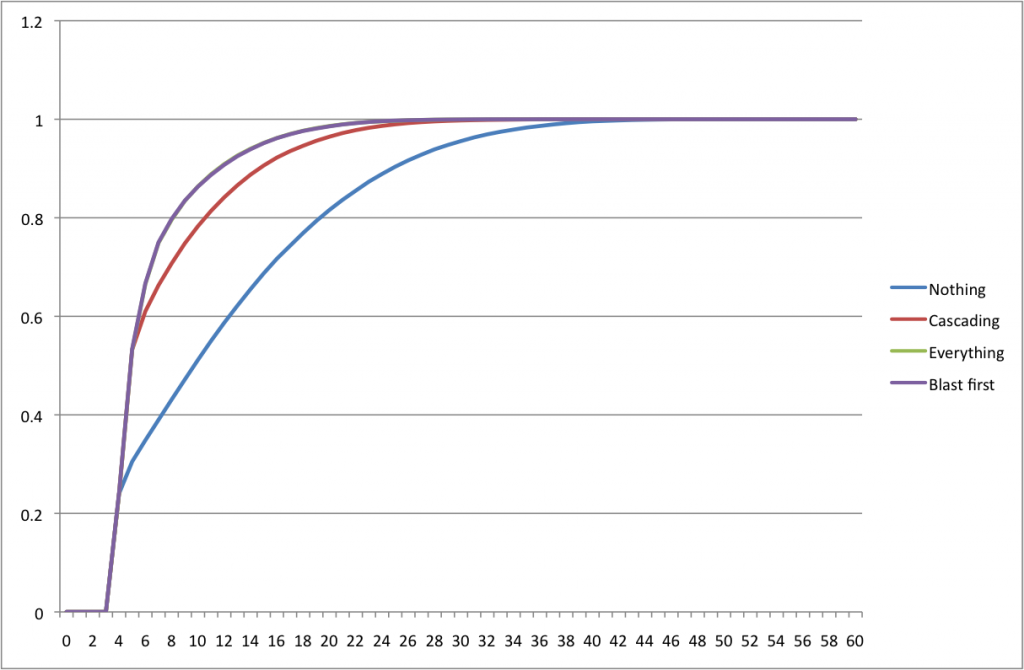This has come up a couple times now, and I think it deserves its own post: what’s a good one-shot metric for Magic? As in, what’s the best way to boil down a situation into a single number?
The motivation for this is that pretty much all Game Theory problems depend on comparing the payoffs for you and other agents. You want to maximize this payoff in these games, so a question about “What should I do?” can simply be comparing a single payoff for that set of strategies.
What’s tricky is how to get Magic to fit into this scheme. First, Magic is a long series of choices, not just a single situation. Thus, when you transition from one turn to the next, it’s not like there’s some result and clear answer about whether you’re better or worse off. The game keeps going.
Typically, these situations are usually dealt with in Magic puzzles by making the challenge to win the game by the net turn. For example I’ve seen quite a few of those puzzles where they set up the cards and say, “How can you win next turn?” (with the implication that you’re a failure if you can’t win). The unfortunate part about this is that this only gives us a binary payoff of either win lose. And a lot of situations depend on more nuanced comparisons between the values.
So some of the metrics I’ve considered or had mentioned to me include:
- life totals. This is what I used in the first You Make the Play. The problem with this in my mind, is that it doesn’t come close to representing anything about the game. I’m comfortable being at 10 life when I just played a Wrath. Not so much when my opponent just sneak attacked a Progenitus. More generally, I’m really wary about using any in-game metric, whether that’s life totals, total mana, total permanents, accumulated beats/card advantage. They’re all meaningful, but none of them can entirely capture a situation
- turns to live. Also an interesting one. I think this one is better in that you assumingly abstract away most of the game to come up with this number. The problem I see with it, though, is that one must immediately ask, “Well, what does that mean to this deck or that deck?” Again, 4 turns to live means a lot more to a heartbeat deck than a turbo-fog deck. Granted, most of these situations are within a single deck, but it doesn’t give consistency between you and your opponent
- an evaluation function. This is what I talked about in minimax. I thinkt his is fair because people can agree that it could somehow exist, and it abstracts away the game. It does better than turns to live because we can also assume that it is normalized for all decks so that a 5 means that a player playing heartbeat would be just about as confident as another player playing zoo who also got a 5. This, however, is obviously very difficult, and I have no idea what such an evaluation function would look like. Heck, if you could figure it out, you could probably “solve” Magic. That, however, is not how things are, though we can imagine that we would come up with something else
- percentage to win. I feel like this is actually very similar to the evaluation function, except that 66% chance of winning means a lot more than 24. Both abstract the game away entirely and turn it into a number that somehow translates into your ability to win. This seems to be what I’ve drifted to, but Reyemile brings up the very valid point that it might not be fair to abstract away the game like this. From a theoretical perspective, this is vastly easier to work with, but given that the purpose of the course is to reevaluate these theoretical games into the much more concrete situation of Magic, I don’t think it’s fair for me to call it a day with this one.
Opinions? Any other methods you feel like would work, or pros/cons of what I’ve mentioned above that I didn’t put down?





